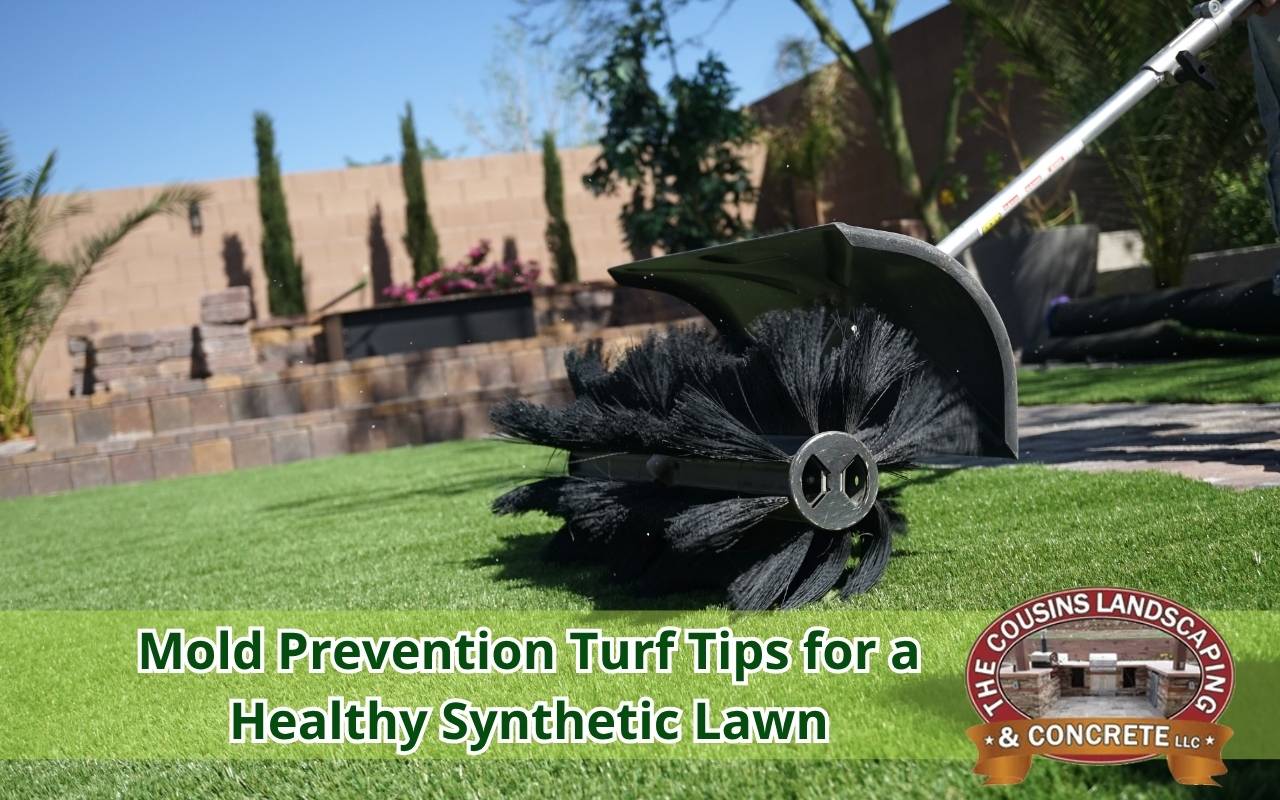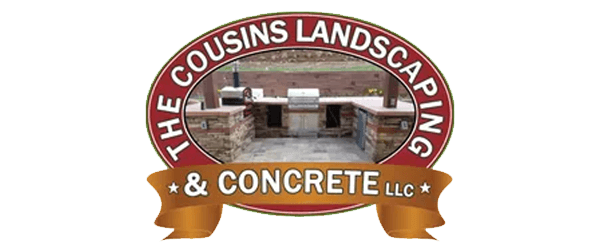
Artificial turf is known for being low-maintenance, but it still needs protection from mold and mildew. Especially in shaded, damp, or poorly drained areas, turf can trap moisture, leading to unpleasant odors, discoloration, or surface buildup. With the right mold prevention turf techniques, you can avoid those issues and keep your lawn fresh year-round.
At The Cousins Landscaping & Concrete LLC, we help homeowners maintain their synthetic lawns with simple, proven care routines. These artificial grass maintenance tips will help you stay ahead of mold before it starts.
Why Mold Can Appear on Artificial Turf
Moisture + Shade = Mold Risk
Even though turf is designed to drain, wet environments can still lead to trapped moisture, especially under heavy furniture, debris piles, or in shaded corners. If not dried or cleaned, these conditions can support mold growth in the infill or backing layer.
Pet Use and Organic Debris
Pet urine, food spills, leaves, or bird droppings can create a layer of organic material on turf. That layer, when combined with water, can result in mildew or mold over time if it isn’t cleaned up quickly.
Artificial Grass Maintenance Tips to Prevent Mold
Rinse and Brush Regularly
Rinse your turf every 1–2 weeks, especially after heavy rain or pet activity. Use a broom or turf rake to lift the blades and help air flow beneath the surface. This simple action helps dry out the turf and disrupt conditions mold needs to grow.
Keep Turf Clear of Debris
Leaves, sticks, and garden waste can create shade and trap moisture. Use a plastic rake or leaf blower to keep the surface clean. Pay special attention to corners and under furniture where airflow is reduced.
Cleaning and Deodorizing for Mold Prevention
Monthly deep cleaning is a powerful way to prevent mold:
- Rinse the turf with a garden hose
- Apply an antimicrobial turf cleaner (enzyme-based is best)
- Let it sit for a few minutes
- Rinse again and brush the blades upright
These products not only clean but also leave behind protection that keeps bacteria and mold from forming.
FAQs About Mold Prevention on Artificial Turf
Can mold grow on synthetic grass?
Yes, but it usually forms due to trapped moisture, pet use, or debris.
How do I know if I have mold on my turf?
Look for musty odors, dark patches, or sticky surfaces. Mold often starts in shaded, wet areas.
What’s the best product to prevent mold on turf?
Use an enzyme-based or antimicrobial turf cleaner that’s safe for pets and grass fibers. We can recommend the right cleaners for your lawn—contact
The Cousins Landscaping & Concrete LLC.
Keep Your Turf Fresh and Mold-Free Year-Round
Preventing mold is all about consistency and airflow. With just a little routine care, you can enjoy a clean, healthy lawn that stays green, soft, and odor-free—no matter the season.
Contact us today for expert turf cleaning, drainage advice, and personalized maintenance plans.
